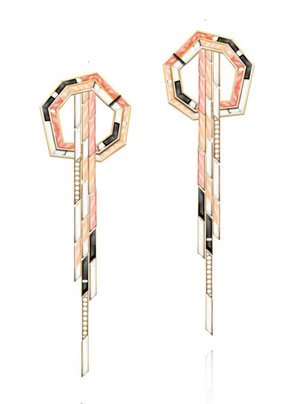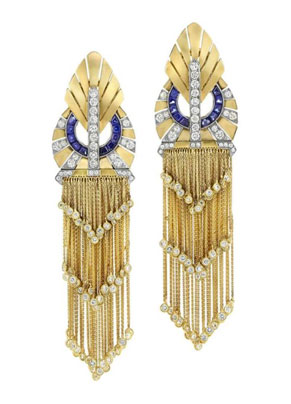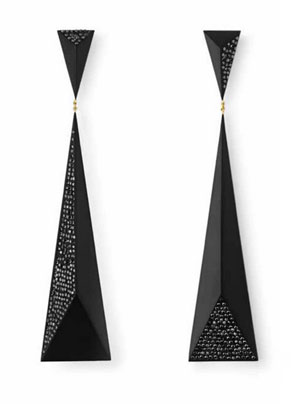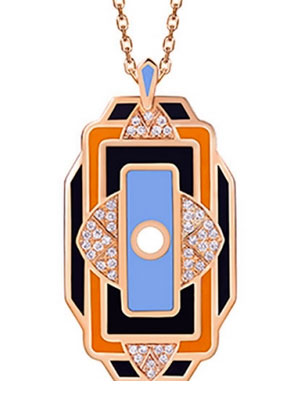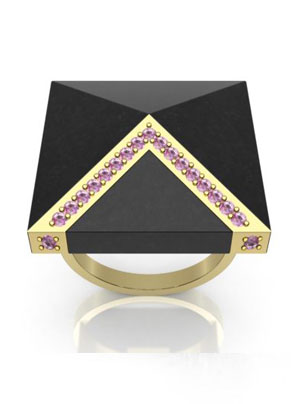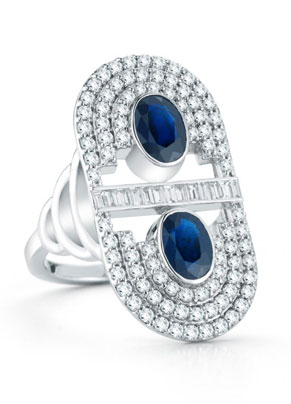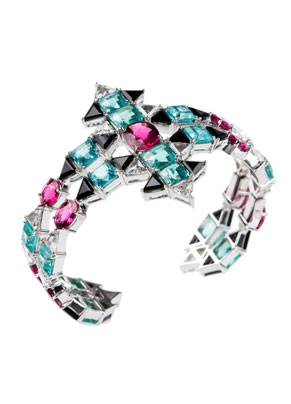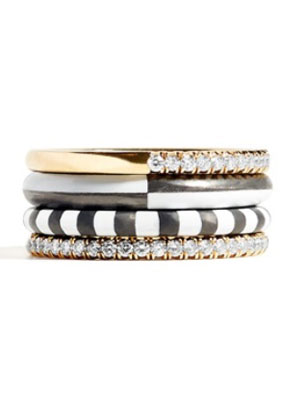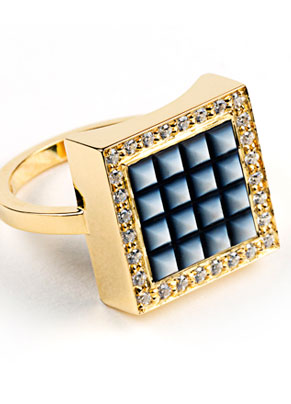DECONSTRUCTING DECO: Linear, Geometric and Bold
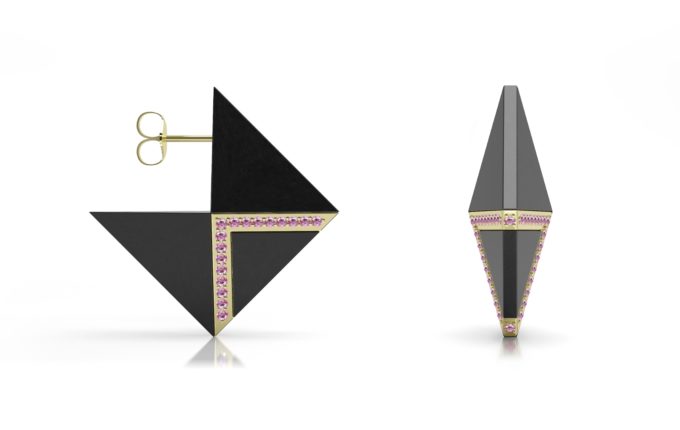
How do you interpret a modernist movement to appear even more modern? Designers such as Nikos Koulis, Deborah Pagnani, Jacqueline Cullen, Lily Kemper, Tomasz Donocik and Marc Alary have all mastered timely takes on Art Deco jewelry. Like the proponents of the Deco Movement, these designers are inspired by shifts in the cultural climate and technology with a nod to the clean lines and pared down styles of the 1920s.
The early 20th century was a time of change. Women were hiking up their skirts and dancing the night away in sleeker dresses with an ease, freed from the constraints of earlier fashions. Women gained the right to vote in the US while men were building skyscrapers in a world influenced by speed. Jazz and the machine age, architecture and fine art, such as cubism–with its geometric forms and angular lines–all influenced the jewelry of the day. Although we first saw the shift as early as 1920, it was the Exposition International des Arts Décoratifs et Industriels Modernes, held in Paris in 1925, that fueled the acceptance and new look made popular by jewelers and renowned houses who showed at the exhibition. Raymond Templier, Cartier, Van Cleef & Arpels, Jean Fouquet, Jeanne Bovin, Suzanne Belperron, Boucheron and Chaumet all produced some of the most influential jewels of the day and defined the times.
Today, designers do not have a unified movement but there is a collective consciousness that is focusing on circular or linear form and sleek and streamlined looks that are bold and statement making. They are rendered in both precious and non-precious materials. Many of today’s designers are bringing in more vivid colors instead of the all-white platinum and diamond look of the early years of Deco. In the later part of the Deco period, designers only used vibrant gems after the exotic regions of Asia and Egypt were explored and provided inspiration.
Movement, contrasting elements and colors, and dare-to-be-different pieces are the looks designers are focusing on today. What all of these designers and looks share is a relevance and presence in today’s jewelry while paying homage to looks that defined a movement and an earlier moment in time.
- Tomasz Donocik enamel and gold earrings
- Fred Leighton Signature Dress Clips converted into earring with Geometric and linear shapes.
- Jacqueline Cullen’s Whitby Jet and black diamond earrings
- NY Rock enamel pendant
- Jacqueline Cullen’s Whitby Jet and ruyb inlay ring
- Deborah Pagnani’s white diamond and onyx ring
- Nikos Koulis bright colors in geometric patterns on a cuff of contrasting gemstones agains black
- Marc Alary’s geometric enamel and diamond/gold rings
- Lily Kemper’s Carved Geometric Agate ring

